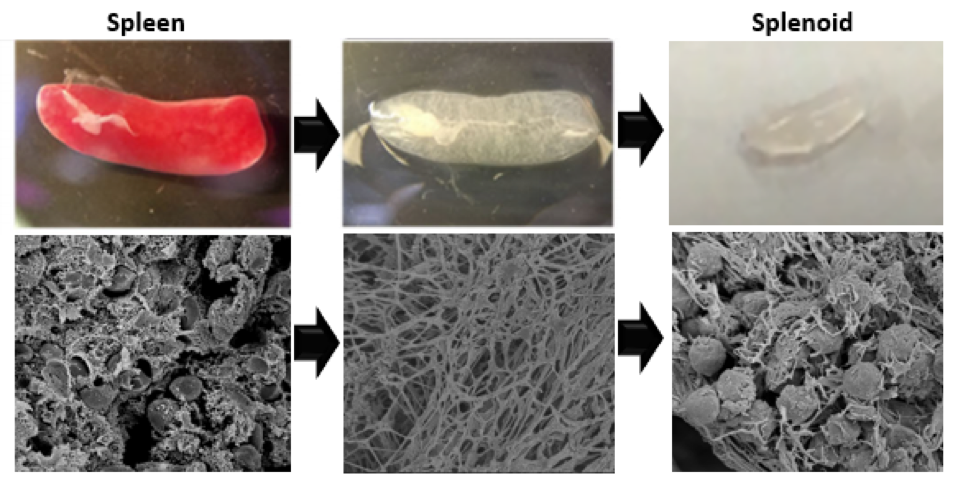
Fabrication of bioartificial spleens for immunological studies and therapeutic applications
Lead: Srinandhini Chandran
Team Members: Thao Nguyen, Maliha Mir
Collaborator: Dr. Balan
Project Summary: 3-Dimensional (3D) culture allows a cell to grow in all dimensions, just like in vivo. With the evolution of 3D cultures, the incorporation of Extra Cellular Matrix (ECM) components enhance cell growth and function. To improve in vitro culture of immune cells without the use of stimulatory cues like antibodies and cytokines, we fabricated bioartificial spleens, called splenoids, using a decellularization and recellularization protocol. Our completed studies show drastically altered immune cell growth, with emergence of an unusual immune population within the splenoid environment. These unusual leukocytes may have immunoregulatory or immunosuppressive functions. If that can be confirmed, they may potentially be useful for use in adoptive cell therapy (ACT) to modulate conditions such as cancer and autoimmunity. In vitro and in vivo functional studies are in progress to characterize these unusual immune cells.
What is already known in the field?
- 3D cultures enhance cell viability, growth, and function.
- ECM components as the culture matrix have advanced 3D cell culture technology.
- Decellularized organs represent a good source of native ECM matrix for 3D culture.
What is new?
- Decellularization and recellularization of spleens to develop bioartificial spleens – splenoid – for immune cell culture
- Increased survival and growth of specific immune cells in vitro using splenoid cultures
- Immunological studies using splenoids
- Superior platform for rapid expansion of unusual immune cells
Why is this important?
- Immune cells need continuous stimulatory cues to prolong their survival in vitro. Splenoid culture may offer the needed stimulatory cues, at least for some cells.
- Immunoregulatory cells may have clinical utility; hence it is important to study this system and emerging cells further, using in vitro and in vivo models.
Ongoing/future steps:
- Explore the cellular origin of the expanding immune cells in splenoid cultures
- Identify splenic/ECM molecules responsible for the functional cues delivered to immune cells
- Test the functional impact of the expanded immune cells from the splenoid cultures, in vitro and in vivo